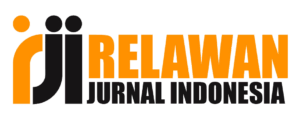The Effectiveness and Students’ Respond Toward Exercise-Based Textbook of Morphology in Online Learning
Abstract
Online learning is currently one of the lecture models that is widely applied on various campuses. However, learning control raises a problem so a solution is needed to maintain the quality of learning. This study aims to test the effectiveness of textbooks in online learning in morphology courses. The method used is a mix of quantitative and qualitative methods. to assess the feasibility of textbooks, researchers distributed questionnaires to students. statistical test results showed that there is a significant influence between the use of exercise-based textbook with students’ learning outcomes (Sig. = 0.021<0.05) in which class B who used textbooks scored 81.190 or higher than class A who did not use textbooks with a score of 70.727. Students’ response to the textbooks used are 71% good so that the textbook is suitable for use as textbooks. Thus, the use of exercise-based textbook on online learning in morphology courses is very helpful in improving the quality of learning.
References
Akhiroh, N. S. (2017). Teaching English in Non-English Departments: Empowering Teacher Towards Improvement. IJEE (Indonesian Journal of English Education), 4(1), 49–62. https://doi.org/10.15408/ijee.v4i1.5341
Arjulayana, A. (2018). Non-English learners’ needs in learning English as a foreign language. Asian EFL Journal, 20(4), 154–161.
BPSDMP-PMP. (2012). Pedoman penulisan buku ajar peningkatan kompetensi pendidik. BPSDMP-PMP.
Dewi, H. H., Hidayatullah, S. M. M., Sukarno, Lestari, A. E., Dewi, I. L., & Citraningrum, D. S. (2023). English Materials Development for an Undergraduate Communication Study Program: a Need Analysis in Indonesian Context. 26(1), 69–91.
Dockx, J., Bellens, K., & De Fraine, B. (2020). Do Textbooks Matter for Reading Comprehension? A Study in Flemish Primary Education. Frontiers in Psychology, 10, 2959. https://doi.org/10.3389/fpsyg.2019.02959
Fauzan, U. (2014). Developing EFL Speaking Materials for the Second Semester Students of STAIN Samarinda. The 61st TEFLIN International Conference 2014, 61, 861–864.
Kaewpet, C. (2009). A Framework for Investigating Learner Needs: Needs Analysis Extended to Curriculum Development. Electronic Journal of Foreign Language Teaching, 6(2), 209–220. https://e-flt.nus.edu.sg/v6n22009/kaewpet.pdf
Kütük, S. İ., & Su Bergi̇l, A. (2021). The Effectiveness of English Textbooks at MONE from Teachers’ Aspect. Kastamonu Eğitim Dergisi, 29(5), 965–973. https://doi.org/10.24106/kefdergi.764273
Menggo, S., & Darong, H. C. (2022). Blended Learning in ESF/EFL Class. LLT Journal: A Journal on Language and Language Teaching, 25(1), 132–148. https://doi.org/10.24071/llt.v25i1.4159
Mohammed, A. K., & Gutema, H. (2023). English Language Teachers’ Continuous Professional Development Obstacles. LLT Journal: A Journal on Language and Language Teaching, 26(1), 255–271. https://doi.org/10.24071/llt.v26i1.5912
Newton, J. M., & Nation, I. S. P. (2020). Teaching ESL/EFL Listening and Speaking (2nd ed.). Routledge. https://doi.org/10.4324/9780429203114
Nunan, D. (2015). Teaching English to Speakers of Other Languages: An Introduction (1st ed.). Routledge. https://doi.org/10.4324/9781315740553
Nuriyah, D., Sutarto, & Prihatin, J. (2020). The development of environmental change textbook based on STEM-Cp to improve problem-solving skills in high school biology learning. Journal of Physics: Conference Series, 1563(1), 12054. https://doi.org/10.1088/1742-6596/1563/1/012054
Prastowo, A. (2012). Panduan Kreatif membuat Bahab Ajar Inovatif. Diva Press.
Rahmaniah, R., & Asbah, A. (2019). The Speaking Difficulties Encountered by Non-English Students in Language Classroom. Linguistics and Elt Journal, 5(1), 22. https://doi.org/10.31764/leltj.v12i2.749
Rahmawati, L., & Sutarman, S. (2021). Peningkatan Keterampilan Bahasa Inggris SMPN 19 Mataram Melalui Model Triple P. ADMA : Jurnal Pengabdian Dan Pemberdayaan Masyarakat, 1(2), 115–124. https://doi.org/10.30812/adma.v1i2.1030
Richards, J. C. (2013). Curriculum Approaches in Language Teaching: Forward, Central, and Backward Design. RELC Journal, 44(1), 5–33. https://doi.org/10.1177/0033688212473293
Rosida, R., Fadiawati, N., & Jalmo, T. (2017). Efektivitas Penggunaan Bahan Ajar E-book Interaktif dalam Menumbuhkan Keterampilan Berpikir Kritis Siswa. Jurnal Pembelajaran Fisika, 5(1). https://jurnal.fkip.unila.ac.id/index.php/JPF/article/view/11886
Sabrina, A. (2020). The Implementation of Communicative Language Teaching in English Practice. NOTION: Journal of Linguistics, Literature, and Culture, 2(1), 17. https://doi.org/10.12928/notion.v2i1.1750
Setyawati, R., Suwandi, S., Andayani, A., & Rohmadi, M. (2015). A Critical Literary Review of Expert Opinions Toward Textbook Development. International Conference: Enhancing Education Quality In Facing Asian Community, 614–631. http://prosiding.upgris.ac.id/index.php/semnas_2015/
s_2/paper/view/661
Shawer, S., Gilmore, D., & Banks-Joseph, S. (2009). Learner-Driven EFL Curriculum Development at the Classroom Level. International Journal of Teaching and Learning in Higher Education, 20(2), 125–143. https://eric.ed.gov/?id=EJ864331
Toro, V., Camacho-Minuche, G., Pinza-Tapia, E., & Paredes, F. (2018). The Use of the Communicative Language Teaching Approach to Improve Students’ Oral Skills. English Language Teaching, 12(1), 110. https://doi.org/10.5539/elt.v12n1p110
Wang, J. (2022). Exploring Moral Values in English Coursebooks for University Students in China. LLT Journal: A Journal on Language and Language Teaching, 25(2), 434–446. https://doi.org/10.24071/llt.v25i2.4937
Wulandari, N., Prihatin, J., & Wahyuni, D. (2020). Effectiveness of Textbook with Brain-Based Learning Approach Accompanied by Mind Mapping of Earth Layer Material to Improve Learning Outcomes Critical Thinking Junior High School Students. International Journal of Advanced Research, 8(11), 374–379. https://doi.org/10.21474/IJAR01/12018
Yaumi, M. (2013). Prinsip Prinsip Desain Pembelajaran. Prenada Media Grup.

This work is licensed under a Creative Commons Attribution 4.0 International License.













